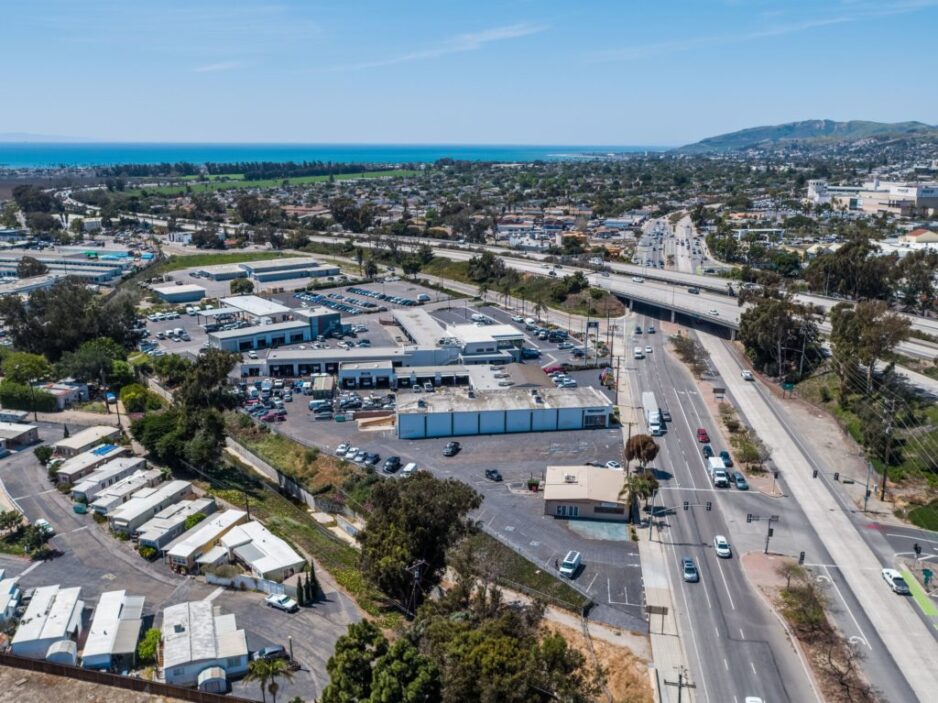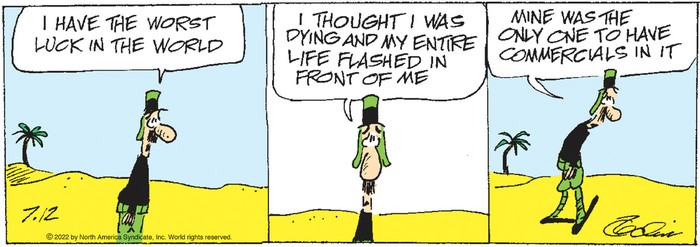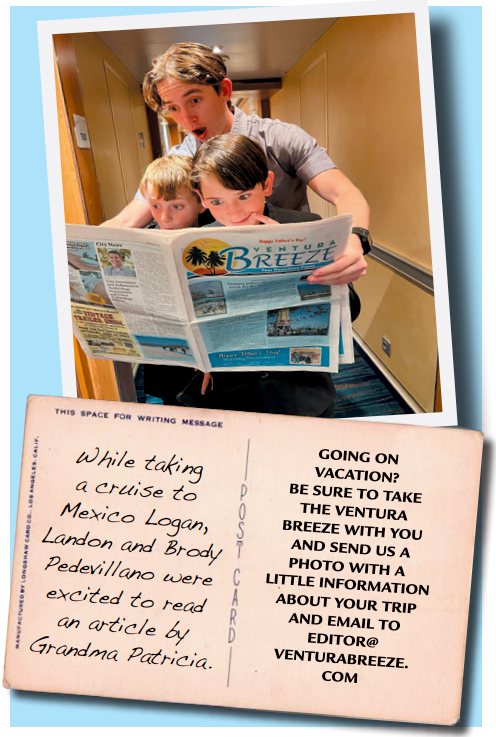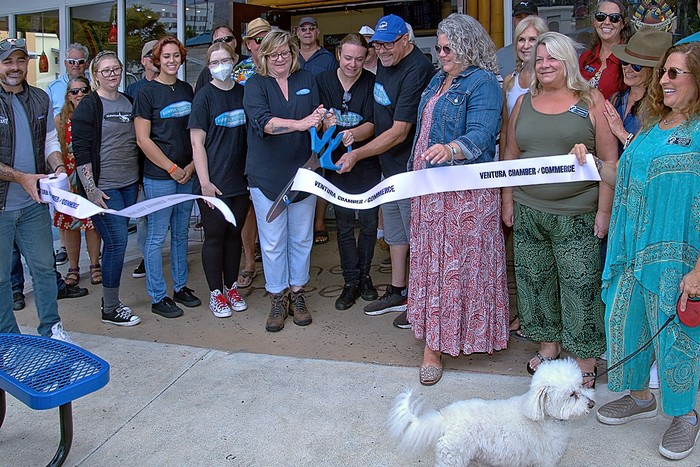Real Investments has announced the sale of a property in Midtown Ventura. 3850 E. Main is approximately 2.45 acres of land. The property was sold for $5,400,000 to a local company, Island View Properties LLC.
All posts by admin
What does the DRC do?
The purpose of the city Design Review Committee is to review, consider approve or deny applications for approval of design of architectural, landscaping, aesthetics for public and private projects, applications for sign variances, and proposed design elements or components of specific plans, historic districts, or other special areas.
The Committee Members are (there are 2 vacant seats)
Albert Antelman, Chair
William Growdon, Vice Chair
Anthony Tomasello
Local nonprofit wins big on America Says!
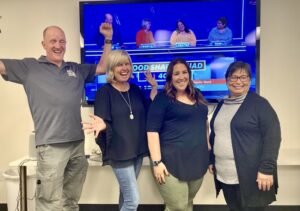
Four staff members from Food Share, Ventura County’s largest hunger-relief organization, just won big on The Game Show Networks’ season five of America Says! Comedian, John Michael Higgins, is the host of this popular fill-in-the-blank guessing game.
The invitation to compete came via a fellow Feeding America food bank and was a great way to put the fun in fundraising! Food Share’s President & CEO, Monica White; Jennifer Caldwell, Chief Development Officer; Pam Castro, Agency Relations Manager, and Ed Skains, Facilities Coordinator, headed down to a studio in Burbank, and the “Food Share Squad” went head to head against “The Inlaws” in a fierce competition.
After a nerve-wrackingly slow start the Food Share squad pulled ahead of their competitors and made it to the one minute buzzer round, walking away with the full prize money of $15,000!
“We had an absolute blast,” commented Monica White. “It was completely terrifying but after a losing streak we managed to pull through. What a fun way to be able to bring in funds to help serve our community!”
All proceeds are being dedicated to Food Share.
CMH Auxiliary scholarship awards
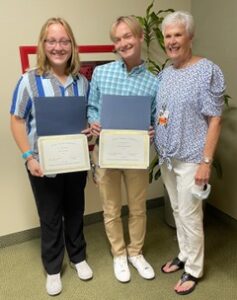
Three CMH Auxiliary Junior Volunteers were this year’s scholarship award winners. Each of these graduating high school seniors received $1000 toward their future education.
Troy Braun received the Maria Cavallo Scholarship awarded to those pursuing a career in the medical field. Troy accumulated 243 hours of volunteer work while also maintaining a 4.42 unweighted GPA. In addition, he served as a worship team leader for his youth group and was a Tae Kwon Do studio volunteer. He won the Renaissance Award for Academic Achievement and a National Honor Society Award. He worked as a supervisor at Chick-fil-A and was named a Chick-fil-A scholar.
Troy will be attending Pepperdine University and will major in Psychology/PreMed in preparation for a career in Pediatric Oncology.
Zachary Leppaluoto and Hannah Miller were both recipients of the Audrey Woodburn Scholarship for students pursuing a career in nursing.
Zachary served 263 volunteer hours and earned a 3.74 unweighted GPA. He was involved in Boy Scouts and received his Eagle Scout Award in 2019. He also ran cross country and track and was an Academic Decathlon member. He is an AP Scholar with Honors, a Renaissance Academic Achievement recipient for 3 years, and accomplished all of this while also working as a Starbucks barista for the last year. He will be attending the University of Portland, majoring in nursing with a goal of becoming a registered nurse.
Hannah Miller volunteered for 234 hours and achieved an unweighted GPA of 4.09. She was team captain for Buena’s girls’ softball, a Dia De Los Muertos filmmaker, and assisted with Relay for Life and the Salvation Army’s Adopt a Family program. In addition to achieving the Highest Batting Award for softball, she was awarded the Renaissance Academic Achievement for all 4 years of high school, and the Integrity Award. She also worked as a snack bar cashier, and at Two Trees Escape as well as being a sought-after babysitter. She will attend Loyola Marymount University, pursuing her goal of a Doctorate in Nursing Practice.
The Bookmark About Libraries and Friends
by Mary Olson
The Ventura County Library’s Summer Reading Program, “Read Beyond the Beaten Path”, continues through August 14. There’s still time to log your summer reading at https://vencolibrary.beanstack.org and pick up Grab and Go STEAM kits at any library branch.
Visit E.P. Foster Library (805 648-2716) for the Maker Lab on Tuesdays, July 19 & 26, 4 to 6 pm. Lego Play is back every other Friday (July 15 & 29 & August 12), 2 to 4 pm. On alternate Fridays (July 22 & August 5, 2 to 4 pm) kids and teens can drop in for Game Days with Nintendo Switch, Wii U and board games.
On Wednesday, July 20, 3 to 4 pm, learn what we know and what we imagine about Dinosaurs at Paul’s Prehistoric Park Presentation at E.P. Foster. See how drawing simple shapes can lead to creating these fantastic beasts from millions of years ago.
E.P. Foster will host Bilingual Musician/Singer Nathalia on Monday, July 25, 11 am to noon with songs in both Spanish and English for children of all ages! This event will be held outside on Main Street.
On Tuesday, August 9, 3 to 5 pm, make and launch a Paper Model Rocket outdoors on Main Street in front of the library.
Enjoy a FREE Kona Ice to celebrate the end of summer reading at E. P. Foster on Monday, August 15, 4 to 5 pm.
At Hill Road Library (805 677-7180) , Maker Camp continues Thursdays, July 14, 21 & 28, and August 4, 3:30 to 5 pm offering STEAM projects designed for children 7-18 . On Tuesdays, July 19 & 26, 3:30 to 5 pm, drop in for Art Camp. Children 3 to 7 are invited to explore STEAM through play with their caregivers at Little Lab at Hill Road Library Tuesdays, July 19 & 26 and August 2 & 9, 10:30 am to noon.
On Tuesday, August 9, 3 to 5 pm, celebrate the end of Summer Reading at Hill Road Library with a Summer Snow Day with Kona Ice!
Don’t forget –
Ventura Friends of the Library Book Sale
at the Vons at Telegraph & Victoria
Saturday, July 16, 10 am to 3 pm
Pick up some quality used books at bargain prices. Your purchases help support the Summer Reading Program and other library activities and add books to the library’s collection!
Please stop by to shop and learn about the Friends of the Library. We are always looking for new volunteers – right now we especially need volunteers to help sort and categorize our incoming book donations. Please email [email protected] if you’d like to help.
The basics of Alzheimer’s disease
Scientists are conducting studies to learn more about plaques, tangles, and other biological features of Alzheimer’s disease. Advances in brain imaging techniques allow researchers to see the development and spread of abnormal amyloid and tau proteins in the living brain, as well as changes in brain structure and function. Scientists are also exploring the very earliest steps in the disease process by studying changes in the brain and body fluids that can be detected years before Alzheimer’s symptoms appear.
One of the great mysteries of Alzheimer’s disease is why it largely affects older adults. Research on normal brain aging is exploring this question. For example, scientists are learning how age-related changes in the brain may harm neurons and affect other types of brain cells to contribute to Alzheimer’s damage. These age-related changes include atrophy (shrinking) of certain parts of the brain, inflammation, blood vessel damage, production of unstable molecules called free radicals, and mitochondrial dysfunction (a breakdown of energy production within a cell).
Most people with Alzheimer’s have the late-onset form of the disease in which symptoms become apparent in their mid-60s or later. Researchers have not found a specific gene that directly causes late-onset Alzheimer’s, but having a form of the apolipoprotein E (APOE) gene increases a person’s risk. This gene has several forms, and one of those, APOE ε4, increases a person’s risk of developing Alzheimer’s and is also associated with an earlier age of disease onset. However, carrying the APOE ε4 form of the gene does not mean that a person will definitely develop the disease, and some people with no APOE ε4 may also develop Alzheimer’s.
This content is provided by the NIH National Institute on Aging (NIA). NIA scientists and other experts review this content to ensure it is accurate and up to date.
Ventura Chamber ribbon cutting at Surfer’s Point Café
Photo by Michael Gordon
The Ventura Chamber held a ribbon cutting at Surfer’s Point Café located at the corner of Thompson and Figueroa St.
Abnormal structures may be an important biomarker for future frailty risk.
Physical frailty is associated with abnormal structures in white matter of the brain, according to a study funded in part by NIA. The research, led by an NIA scientist and published in the Journal of Gerontology, Series A: Biological Sciences and Medical Sciences, suggests that these abnormal structures may be an important biomarker for future frailty risk.
Frailty is common in older adults and is characterized by susceptibility to poor health, a loss of physical or psychological function, and an elevated risk of disease and death. Physical frailty is associated with an increased risk of developing dementia and other neurologic disorders, but few studies have examined the neurobiological changes that underlie frailty and frailty risk. The research team studied the association of cerebral white matter structure with current and future frailty.
The researchers engaged participants in the Atherosclerosis Risk in Communities Study (ARIC) Neurocognitive Study, an ongoing, community-based study that recruited 15,792 volunteers aged 45-65 years from Washington County, Maryland; Forsyth County, North Carolina; northwestern suburbs of Minneapolis; and Jackson, Mississippi.
Using brain MRI data from 1,754 participants in the ARIC Neurocognitive Study, the researchers found that frail individuals had more abnormal white matter structures in their brains, known as white matter hyperintensities (WMH), than non-frail participants. WMH are brain lesions that indicate injury or disease and show up as bright areas during MRI scans.
Non-frail participants with a high volume of WMH had an increased risk of developing frailty during a seven-year follow-up period, suggesting that WMH may be an important biomarker for future frailty risk. The findings held true for Black and white participants, men and women, and those without a history of dementia or stroke. Though frailty is unlikely to cause these brain changes, it is possible that structural damage to cerebral white matter promotes the development of frailty.
The research suggests physical frailty may serve as a clinical indicator of cerebral small vessel disease and perhaps a sign that a person has an increased risk for future dementia or cognitive deterioration. The team noted that implementing a frailty assessment in a health care setting may help identify individuals at risk for cognitive and functional decline. Additionally, they acknowledged that other biomarkers of brain health, such as brain volume, may also relate to frailty risk.
Further studies are needed to determine whether neurological factors play a causal role in frailty development.
This research was supported in part by NIA grants ZIAAG000348 and P30AG021334.
